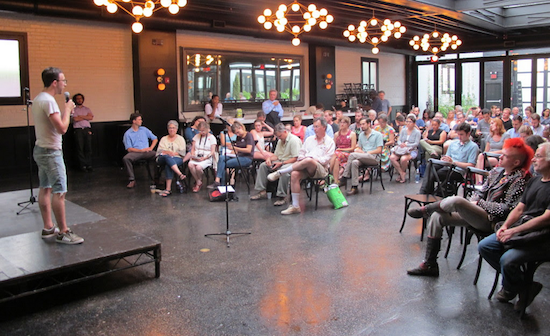Disparate factions unite to ‘take back’ Gowanus

The Take Back Gowanus event was held at 501 Union Street
What do a self-styled “provocateur,” a mohawked leather jacket punk rocker, a dredger, a cartographer, a cane-wielding rabble rouser, a public housing advocate and a sprinkling of neighborhood homeowners, preservationists, attorneys and industrial workers all have in common?
Council Member Brad Lander has somehow convinced them to band together–against him, and developers interested in the Gowanus canal.
“Lander’s whole process was rigged to create a forced consensus to give the developers a green light to go forward,” said Debbie Stoller, a resident of Gowanus for 11 years. “This meeting is meant to set that straight.”
